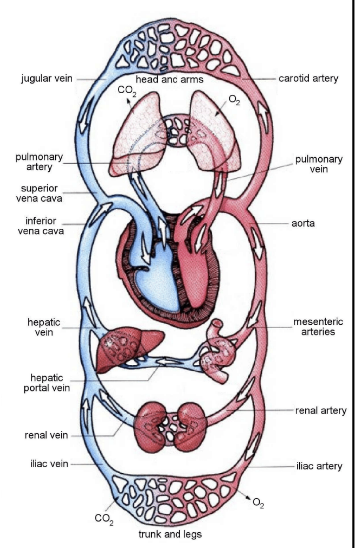Hello! My name is Vicki Magnan, and I am honored to be a new member of the team at Hartland Movement Center. I am an Occupational Therapist and certified in lymphatic treatment, kinesiology taping and Healthy Steps (a lymphatic-stimulating movement-based program). I bring to the center almost 30 years of experience as an OT, with focus on the treatment of acute and chronic swelling disorders. The treatment that I provide is based on the Vodder method, called Manual Lymphatic Drainage (MLD). In addition to providing this unique lymphatic-stimulating manual treatment, I offer a wide range of compression garments for those with acute and chronic swelling disorders, and also for athletes. My passion is the education and holistic treatment of a very complex system, that often goes undiagnosed.
Let’s get started in learning about the lymphatic system!
When considering our body’s systems, we understand the importance of the cardiovascular and respiratory systems to our survival, as well as other organ systems like the kidneys and liver. If we experience pain, we develop a great respect for our musculoskeletal and neurological systems. But what about our lymphatic system? Stanley Rockson, MD, Director of Lymphatic and Venous Disorders at Stanford University and lymphatic system educator/extraordinaire authored the article “Lymphatic Medicine: Pardoxically and Unnecessarily Ignored.” He discusses the trend in lack of understanding and education within our healthcare system. Dr. Rockson states, “the average medical school graduate receives an exposure to the lymphatic system curriculum for less than 30 minutes within a four-year medical education.” (YIKES!)
A growing concern began in post-mastectomy and breast cancer cases because of the development of arm lymphedema. As awareness of the possibility of lymphedema occurring because of cancer and cancer-related treatments grew, there became (and continues) a sort of stigma attached to the word lymphedema. For many, when hearing the word lymphedema, thoughts are immediately associated to cancer.
The goal of this blog is to provide an increased understanding of our lymphatic system. and an awareness that “stuck lymph” can affect each one of us in different ways. So, let’s get started in understanding the core responsibilities of the lymphatic system:
- Immunological: Aids in creating and circulating white blood cells and lymphocytes, detecting, and combating foreign cells, fighting off infection and disease.
- Transport and Homeostasis: Provides a balance within the tissue space by transporting fluids, tissue waste and proteins.
- Gut Health: Absorbing and distributing fats and fat-soluble vitamins from the digestive system.

We understand that the heart is the driving force in blood distribution. It is the “motor or engine” of the cardiovascular system. Arteries carry oxygen-rich blood to the body’s tissues, providing nutrients and oxygen. Veins carry the deoxygenated blood and tissue waste back to the heart. The lymphatic system is responsible for “lightening the waste load” for the vascular system, carrying and distributing a portion of that waste material.

The lymphatic system is a hierarchical branched system, comprised of organs, lymph nodes, vessels, tissue, and lymph fluid. Within the lymphatic vessels are an abundance of “little motors or engines,” called lymphangions or “lymph-hearts.” There are many reasons that swelling, or a back-up of fluids occurs, such as trauma, disease process, obesity, and genetics.
Chronic swelling (edema that does not resolve with elevation or a night’s rest) is known as lymphedema and it can occur anywhere in the body. Lymphedema is further broken down into two classifications: primary and secondary. Primary lymphedema is a genetic condition that may occur at birth or later in life and develops due to the absence or malformation of the lymphatics. Secondary lymphedema occurs due to an insult to the lymphatics, such as trauma, disease process, chronic venous insufficiency, obesity, cancer or cancer-related treatments, and surgical procedures.
The gold standard of treatment for lymphedema is a comprehensive treatment approach, which includes a specialized manual technique called manual lymphatic drainage or “MLD.” A primary goal in proper lymphatic treatment is to facilitate “lymphangiomotoricity,” in other words, stimulating a “pumping action” within the lymphatics to effectively move lymph fluid. Additionally, varying types of compression therapy, skin care, an individualized home exercise program and education are all necessary components in successful lymphatic treatment. Gold standard treatment is provided by highly trained individuals, such as occupational and physical therapists who are additionally certified in lymphatic treatment “CLT’s.” A CLT that is certified through LANA (Lymphology Association of North America) demonstrates a significant understanding of the lymphatic system, gold standard treatment, and equally as important, a thorough understanding of medical intake and putting pieces of a client’s “medical puzzle of swelling” together.
Lymphatic treatment is not only beneficial for lymphedema and mixed chronic venous insufficiency/lymphedema diagnosis, but it is also effective with acute swelling issues, such as post orthopedic injury or surgical procedure. It is found to provide relief to those suffering with autoimmune diseases such as Hashimoto’s and Rheumatoid Arthritis. Additional conditions lymphatic treatment may be beneficial for include Connective Tissue Disorders such as Ehler’s Danlos Syndrome. Fibromyalgia, Migraine Headaches, Lyme Disease and “Dependent Edema” (swelling that occurs due to gravity, such as people that are in wheelchairs and are not able to perform calf pump facilitation through weight bearing activities) are other diagnoses that lymphatic treatment is beneficial for. Athletes have also shown to benefit from MLD as part of their recovery.
I look forward to being a part of sharing ongoing blogs with the Hartland Movement Center team. In my next blog, I will be discussing specifically how manual lymphatic treatment and compression therapy benefits the athlete. Please do not hesitate to stop by and introduce yourself. I look forward to meeting you and seeing you around the Center!


